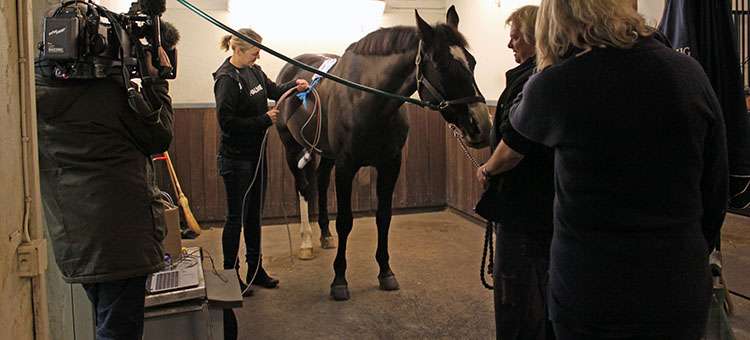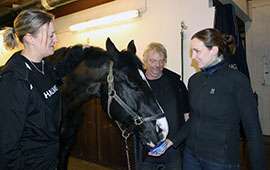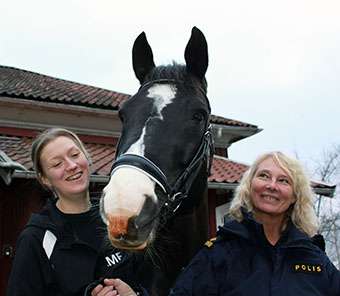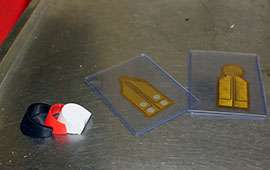Police horses contribute to research in physics

Recently, fifteen police horses in Gothenburg have contributed to science. They have supported the development of a new method to detect damages in the hooves by using thermoelectric sensors. In the future, hopefully, this technique can be an attractive alternative to other diagnostic tools, for example X-rays.
"Some injuries in the hoof capsule of the horses can be difficult to detect, for example cracks or infections in the tissue between the hoof wall and the hoof bone. By measuring the heat transport in the hoof it might be possible to detect damages that cannot be observed in other ways", says Jennie Sköld, Master's student of science engineering physics at Chalmers.
In this research project she combines two of her major interests: physics and horses. She temporarily moved from Värmland to Gothenburg to fulfill this dream. Together with team members from Chalmers Sports and Technology, University of Gothenburg and different collaborators from the industry she is making the first studies on live horses.
"It's nice to be part of such a diverse team with unique competence. My experience with horses has really helped me a lot – it's not necessarily easy to put sensors, wires and equipment on a horse and convince it to stand still", says Jennie Sköld, scratching today's collaborator – Viggo – on the back.
The horse accepts the procedure, rests his head on the shoulder of his friend and farrier, Björn Berg, and enjoys the candy that he gets from Åsa Hinton, the project's veterinary.

"This is totally harmless for the horse. If this method works out the way we hope it will, hopefully we can detect a stress reaction in the hoof capsule before the problem gets too severe. In some cases, it might be possible to decrease the area of surgery, since we could know the extent of the defected area", says Åsa Hinton.
The thermoelectric sensors attached to the hooves measure the thermal conductivity and makes it possible to see the structure of a healthy hoof capsule. The sensors are developed by a spin-off company from Chalmers – Hot Disk – and the application for horses is brand new. To develop it and make it more user friendly they are working on a prototype that can easily be put on the hoof.
After more than 40 hours in close cooperation with the horses, Jennie Sköld and her supervisor Besira Mekonnen Mihiretie, start to see patterns of how a signal from a healthy hoof capsule looks. In the future the patience of the police horses might help other horses to stay in good health.
The horses in the police cavalry in Gothenburg have been selected for various reasons. They are healthy, held and trained in the same way, most of them are of the same breed and they have the same farrier.

"On top of that they are used to strange things, but to take part in a research project is a completely new experience. Of course we want to support this", says Susanne Johansson, division manager at the police cavalry in Göteborg.
"I really hope that this results in a better way for farriers and veterinaries to take care of the horses", says Jennie Sköld.
About the research
A non-invasive method for the detection of damage and changes in equine hoof walls. That's the name of the interdisciplinary research project managed by Chalmers and Gothenburg University and collaborators. The aim is to develop a new method to detect damages in equine hooves by using thermoelectric sensors.
The project started a few years ago and is supported by Materials Science, an Area of Advance at Chalmers. Recently the project was also supported by Vinnova.

Provided by Chalmers University of Technology


















